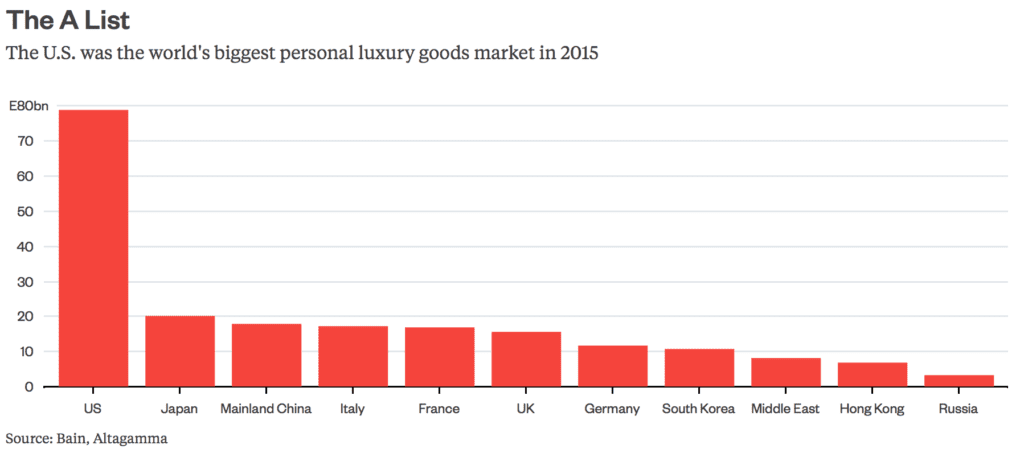
High income shoppers in the U.S. have had their confidence shaken in recent months. Between Britain’s vote to leave the E.U. and economic uncertainty in China, coupled with global stock market and currency swings, luxury brands are suffering.
China is attempting to drive down conspicuous consumption amid a slowing economy, and Chinese tourism growth has ground to halt around the world, meaning fewer visits to U.S. Department stores such as Neiman Marcus and Bloomingdale’s. Luxury retailers have every reason to be concerned.
A slowdown in the U.S., the world’s biggest luxury market could send luxury sellers into a tailspin. Big spenders in the U.S. are holding back due to economic uncertainty at home and abroad. Over the past three years, Americans have contributed significantly to the growth of luxury goods, second only to the Chinese. But for now, both are pulling back. And, some luxury brands are concerned that the uncertainty surrounding the upcoming U.S. election will dampen the market further.
With the U.S. stumbling, there are few other places for luxury sellers to find growth. With the pound’s weakness against the U.S. dollar and the euro, it’s possible that Britain could offer an opportunity. But the U.K. represents just 6 percent of the global luxury market so the opportunity is relatively small.
Some brands, like Accelerated Analytics’ customer LVMH, are weathering the storm due to their diverse set of businesses. And, affordable luxury brands, such as Kate Sade and Stuart Weitzman, may benefit from shoppers trading down to more affordable luxury brands.
Source: www.bloomberg.com


